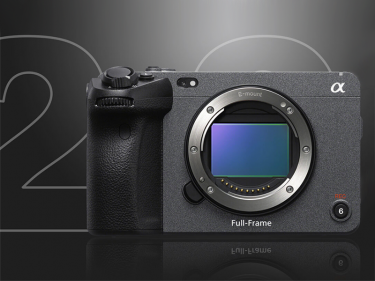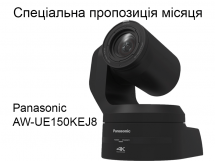| Українська | English | |||||||||||
|
|||||||||||
| News | About company | Service-centre | OB Van/SNG Rental | NextGen Energy Solutions | Contact us |
|
|
Engineering Service, Inc.
» News News Sony has just rolled out a major firmware update for the entry-level camera in their Cinema Line series. The new Sony FX3 firmware 2.00 adds new Log Shooting settings with support to Cine EI modes, monitoring with custom LUTs, improved metadata workflows, and enhanced operability. The update is now available to download for free.
Released in February 2021, the Sony FX3 is the most affordable model in the company’s Cinema Line, which also includes the FX6, FX9, and VENICE 1 and 2 cinema cameras. With this upgrade, the FX3 inherits some of the features of its higher-end siblings to better integrate advanced workflows. The goal of this firmware update is to create a common ground for all products of this series. This should allow professional cinematographers to seamlessly switch between different camera models with unified tools and operability while helping beginners get comfortable with more advanced features. So let’s take a closer look at what’s new! Sony FX3 firmware 2.00: new Log Shooting settings One of the major changes brought by firmware 2.00 is the addition of the new Log Shooting settings for shooting with the S-Log3 gamma curve, while S-Log2 has been removed. These offer users three different options to choose from – Flexible ISO, Cine EI Quick, and Cine EI. Selecting the Flexible ISO option is essentially the same as using the old PP8/9 S-Log3 picture profiles. It allows users to quickly and easily adjust exposure levels by setting the ISO to any of the available values. It’s ideal for general shooting purposes and for users that are already familiar with this approach. On the other hand, the Cine EI Quick and Cine EI mode are aimed at professional cinematographers and allow them to fully take advantage of the wide dynamic range offered by the S-Log3 gamma curve. Both the Cine EI Quick and Cine EI modes exploit the FX3’s dual Base ISO values of 800 and 12,800 (in S-Log3). The main difference is that in Cine EI mode users need to manually select the Base ISO, while in Cine EI Quick the camera automatically picks up the best option for you, based on the selected EI. Shooting using the Cine EI/Cine EI Quick modes requires a different approach to exposure. Since the ISO setting is fixed at the Base ISO, light levels from the scene need to be adjusted to match the camera’s sensitivity and not vice versa. This approach offers several benefits since it allows to retain the full sensor’s dynamic range and should result in images with low noise levels. The EI (Exposure Index) setting can then be changed in post-production which provides greater flexibility in balancing the highlights and shadow areas of the image. Also, a Display LUT setting can be enabled on set to monitor and simulate post-production changes in EI. Finally, if your project requires a quick turnaround and you prefer using the standard or S-Cinetone picture profiles, you can simply turn set the Log Shooting function to Off. LUT monitoring Firmware 2.00 also improves workflows for monitoring the image using LUTs. Previously, when shooting in S-Log3, users could only enable the Gamma Display Assist function, which would convert the log footage into a Rec.709 image. Now, they can load up to 16 custom .cube LUTs into the camera or choose between three different LUT presets – S-Log3, s709, or 709 (800%). The S-Log3 preset lets you monitor the log image without any LUT. The s709 option, which the FX3 inherits from the flagship Sony VENICE, delivers a low-contrast cinematic look. Lastly, the 709 (800%) LUT results in a broadcast-like image with high contrast. These LUT presets are available to download from Sony’s website, so you can also apply them to your footage in post. Moreover, LUTs are now assignable to picture profiles (PP LUT) so you can bake them directly into the footage. Enhanced metadata workflows The new firmware also brings improved metadata workflows. Indeed, along with information for clip stabilization and rotation, the camera now stores EI and LUT settings as metadata. This will allow post-production softwares to correctly interpret the footage and reproduce the exact look that was monitored on set. Furthermore, just like the a7 IV, the FX3 now supports Essence marks. These are two types of shot marks that can be added to the footage during recording or playback to tag specific takes or moments in a clip. All this metadata information will be accessible using the upcoming 2022.1 version of the Sony Catalyst Browse/Prepare software. Moreover, the company announced that a Catalyst Prepare Plugin for Premiere Pro is in the works and will grant direct access to stabilization, EI, LUT, and Essence marks metadata inside the editing software. Timecode sync and AF Assist function Moreover, the FX3 can now be synced with other cameras, such as the FX6 and FX9, using timecode. This requires the optional VMC-BNCM1 adapter and a standard BNC cable. However, timecode output is now supported. Also, the already-great autofocus system has been improved with the addition of the same AF Assist function that is present on the FX6. This allows to seamlessly switch between auto and manual focus modes. For example, while the camera is automatically focusing on a subject, users can intervene to manually perform a focus rack, after which the camera goes back to AF mode. Operability improvements With this firmware update, Sony also worked on improving the usability of the camera. A fresh Main Menu screen now offers a new list-style layout that grants quick access to some of the most frequently-used settings. Separate Main Menus for stills and video recording are available. Finally, the movie standby screen has been optimized to provide a clearer view, while the Function (Fn) menu can now be accessed with a simple swipe-up gesture on the touchscreen display, which can be very helpful when using the camera in selfie mode. Availability The new Sony FX3 firmware 2.00 update is now available to download for free from the company’s support page. « To the list of news |
|
|||||||||||||||||
 |
+38 (044) 593-18-20 +38 (073) 593-18-20 +38 (096) 532-96-82 +38 (095) 532-96-82 Service center Telegram @Engineer_Service |

|
|
|||||
 |
e-mail: engineer-service.tv 15 Vavylovykh str., Kiev, 04060, Ukraine Authorized service centre of Panasonic, Sony, JVC, Fujinon, Canon |
|||||||







